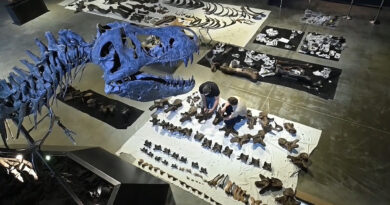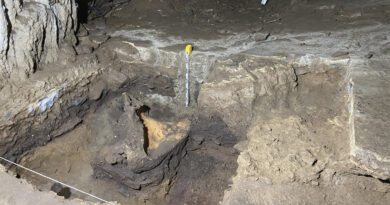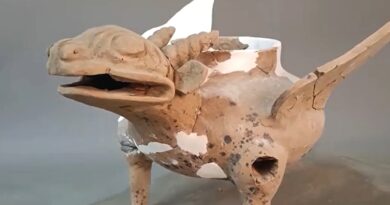Fossil Of Giant Four Foot Penguin That Roamed New Zealand 30 Million Years Discovered By School Children
The 34-million-year old remains of a giant penguin that would have been 4.7 foot tall when it was alive and was found by schoolkids on a fossil hunting trip is of a previously unknown species, scientists have revealed.
A research team from Massey University and Connecticut’s Bruce Museum confirmed that the fossilised remains found by the kids on a Hamilton Junior Naturalist Club (JUNATS) fossil hunting field trip in New Zealand’s Kawhia Harbour in 2006 belonged to a species that was previously unknown.
The researcher published the result of their findings yesterday (16th September) and gave details about the giant penguin named ‘Kairuku waewaeroa’.
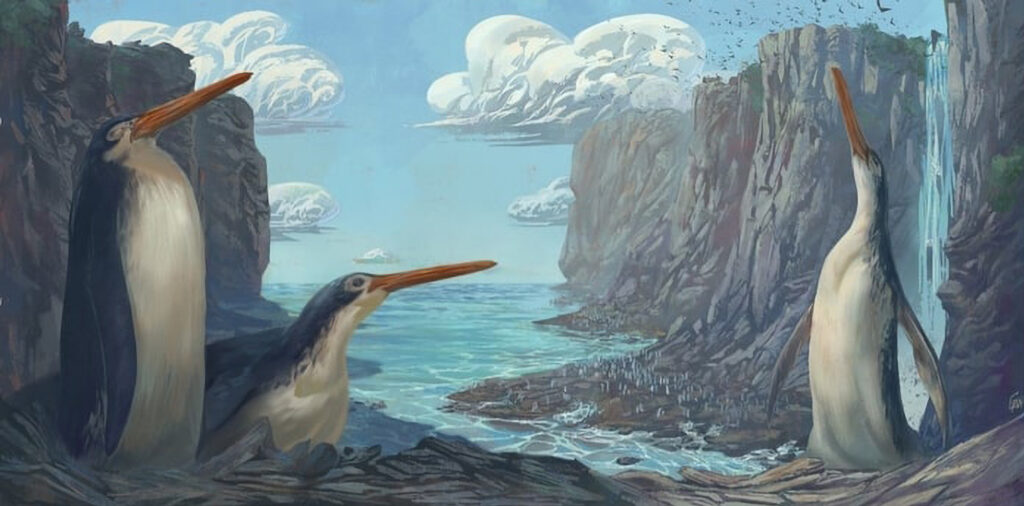
The study confirmed that ‘Kairuku waewaeroa’ roamed New Zealand’s coastline some 34.6 to 27.3 million years ago and dwarfed modern-day penguins with an estimated 4.7 feet in height.
The researcher used 3D scans to reveal more about the ancient penguin that would have been taller than many of the children who discovered it.
Doctor Daniel Thomas, a Senior Lecturer in Zoology from Massey’s School of Natural and Computational Sciences, said: “The penguin is similar to the Kairuku giant penguins first described from Otago but has much longer legs.”
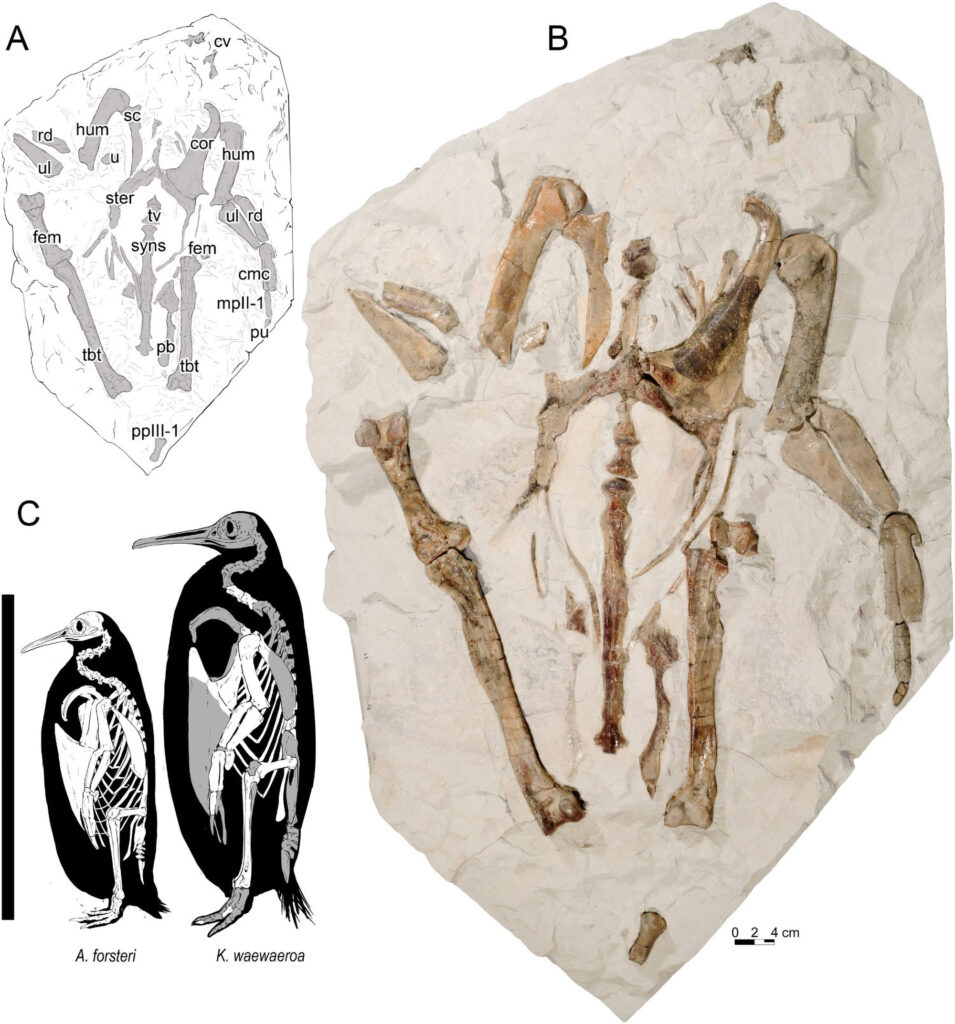
Thomas explained: “These longer legs would have made the penguin much taller than other Kairuku while it was walking on land, perhaps around 1.4 metres tall, and may have influenced how fast it could swim or how deep it could dive.”
The 34 million-year-old penguin’s incredibly long legs earned it the name ‘waewaeroa’ taking inspiration from the Maori word for ‘long legs’.
Thomas said: “Kairuku waewaeroa is emblematic for so many reasons. The fossil penguin reminds us that we share Zealandia with incredible animal lineages that reach deep into time, and this sharing gives us an important guardianship role.”
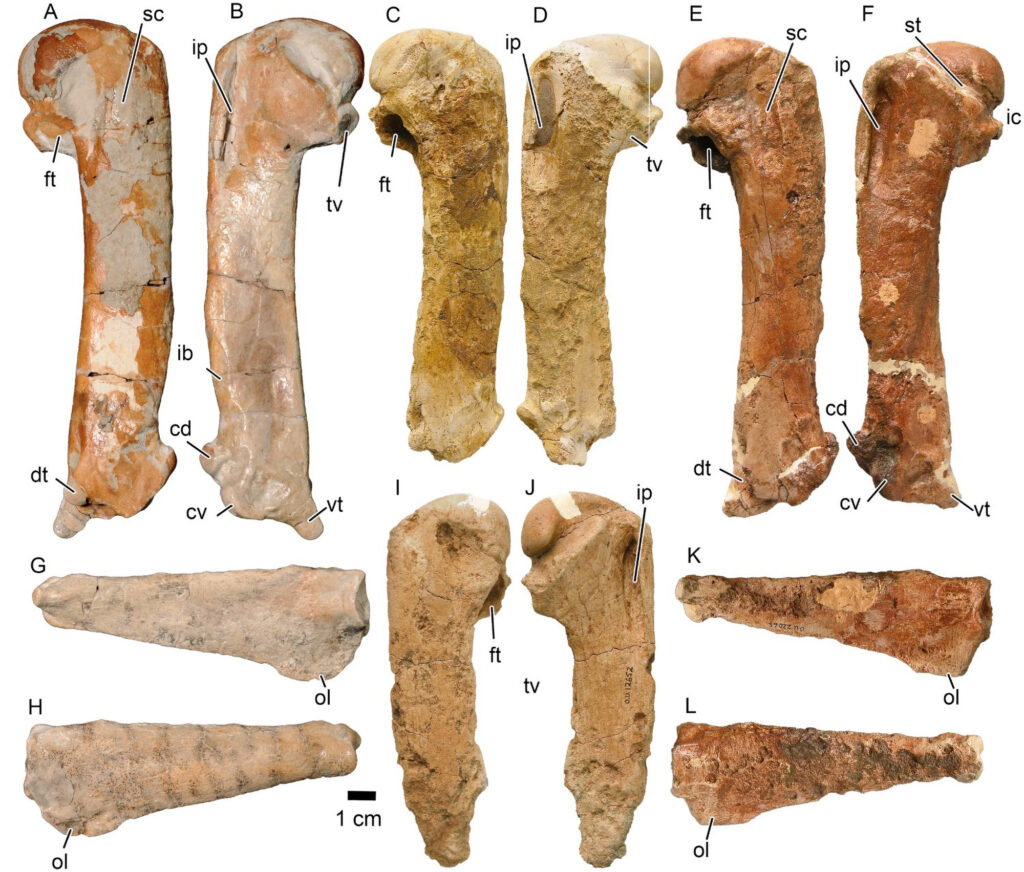
He added: “The way the fossil penguin was discovered, by children out discovering nature, reminds us of the importance of encouraging future generations to become kaitiaki [guardians].”
Steffan Safey, one of the students who discovered the fossil, said: “It’s sort of surreal to know that a discovery we made as kids so many years ago is contributing to academia today.”
Safey added: “And it’s a new species, even! The existence of giant penguins in New Zealand is scarcely known, so it’s really great to know that the community is continuing to study and learn more about them.”
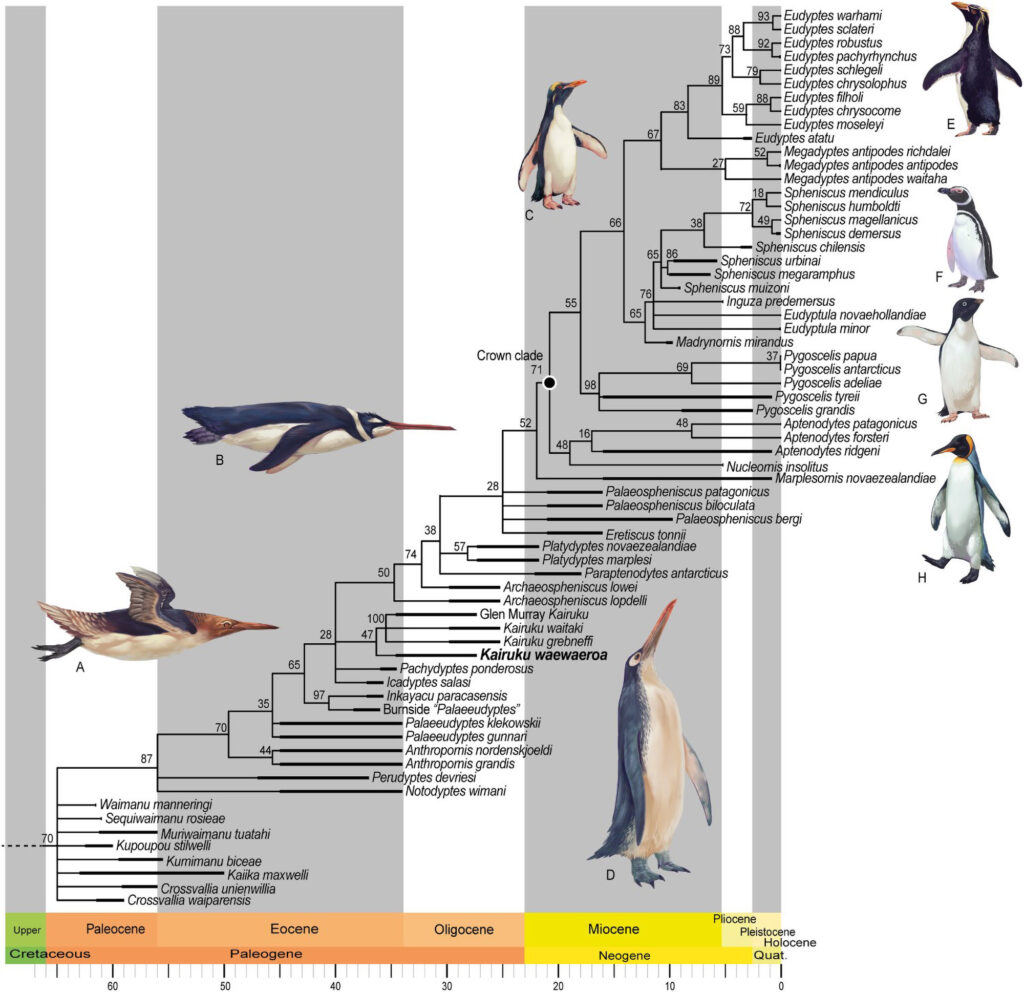
Doctor Esther Dale, a plant ecologist who was involved in the discovery, said: “It’s thrilling enough to be involved with the discovery of such a large and relatively complete fossil, let alone a new species!”
She added:” I’m excited to see what we can learn from it about the evolution of penguins and life in New Zealand.”
Mike Safey, The President of the Hamilton Junior Naturalist Club, said: “This is something the children involved will remember for the rest of their lives.”
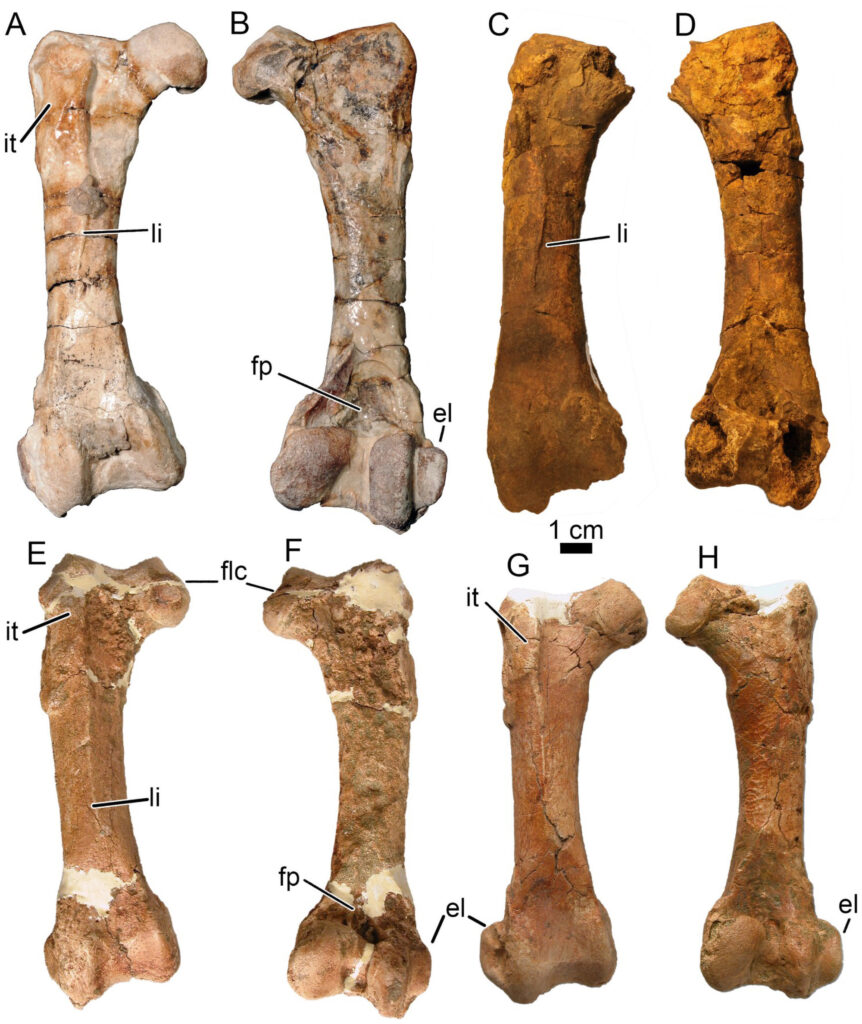
The research paper authored by Simone Giovanardi, Daniel T. Ksepka and Daniel B titled ‘A giant Oligocene fossil penguin from the North Island of New Zealand’, was published yesterday (16th September) in the Journal of Vertebrate Paleontology.

